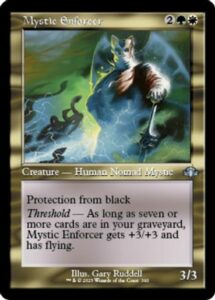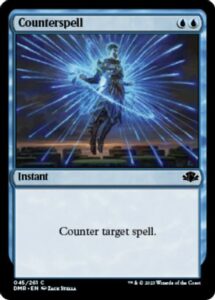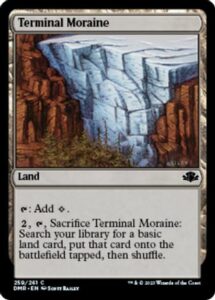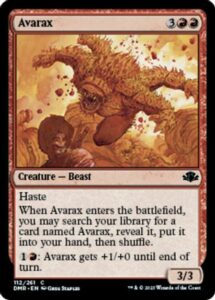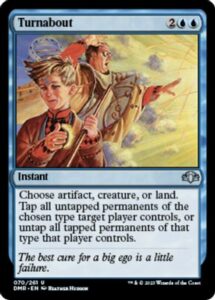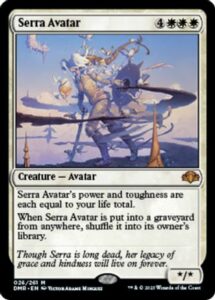Dominaria Remastered Limited
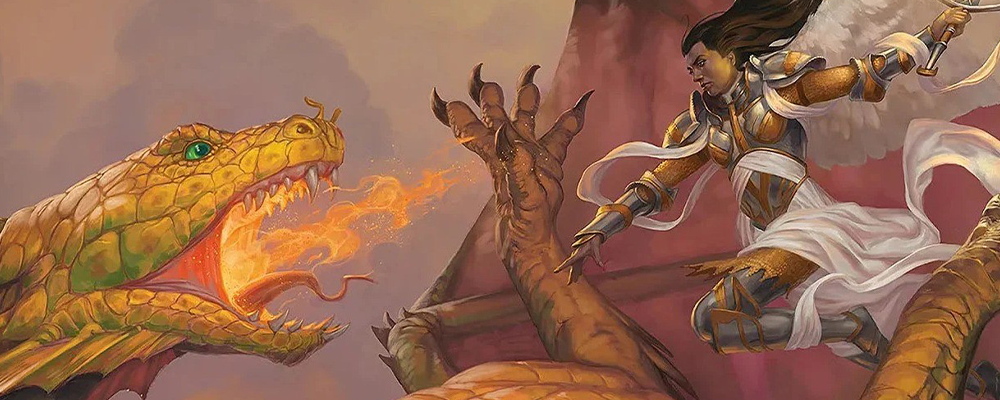
It took a while, but we finally have Dominaria Remastered (DMR) on MTGO. This is a set I’ve been looking forward to drafting, as it hits the sweet spot of when I got really into Magic. I played the original Limited sets where almost all these cards appeared. Dominaria Remastered, for the first time in as long as I can remember, feels like I’m playing old school MTG again.
Compared to what you’re used to, DMR is an underpowered set. The power level drops off steeply and quickly. While you have cards like Spiritmonger, Mystic Enforcer, Lightning Rift, and other incredibly powerful uncommons, the power level drops off a cliff.
Here are some tips I picked up in my first few drafts.
Blue is the best color
As is typical in older sets, blue is very strong. In modern-era MTG, creatures are powerful, close games quickly, and many of them have some stapled-on value. This is not the case in DMR. The creatures can be a bit overcosted, and not many of them provide a ton of value. With cards like Deep Analysis, Man-O-War, and Counterspell at common, blue is strong. It also enables threshhold, a key ability in DMR, better than any other color. Drawing extra cards becomes a huge advantage in slower formats, and blue is best at achieving this advantage.
A well-kept secret from Urza’s Saga days is that Veiled Serpent is basically a common moat. It’s not just a card to board in against other blue decks. You should be happy to play it on turn three against decks attacking on the ground and using the time it buys you to draw a bunch of cards and close the game out with card advantage.
If it’s at all open, I try to move into blue. In addition to being strong itself, it makes so many of the cards outside of blue better. While I don’t have enough data and reps to confirm blue is best, it certainly feels that way and makes sense by looking through the card pool.
Don’t be afraid to splash!
While the mana fixing isn’t quite what we’re used to in DMR, The Lairs and Terminal Moraine can get the job done. More importantly, if you’re blue, you have time to set up various card draws and cards like Impulse to find that third-color source. Since the format is slow, you can afford to play your most powerful cards if you’re a slower deck. Just don’t be too slow.
Respect aggro
The few games I’ve lost of the format were against Gruul decks that played a creature every turn of the game. Wild Dogs curving up to Avarax chaining is a real plan. Just because the creatures are a bit worse on rate, that doesn’t mean you can play a bunch of four- and five-drops and miss the early portion of your curve. Respect aggressive decks by playing some cheap creatures that can block or trade well, or be the one applying pressure yourself.
Avoid storm unless wide open
Storm is a cool archetype in this format. To work, it basically needs all commons and uncommons that are low priority for every other deck like Turnabout and High Tide.
The problem is you won’t always get a bunch of the commons you want, especially if others move in on it. I think a good storm deck is probably the highest ceiling deck in the format, but the average storm deck is going to be mediocre if the opponent can disrupt it at all.
The best way to end up in storm is by wheeling the key cards like High Tide and Turnabout in your otherwise good blue deck. Storm’s most reliable win condition is Empty the Warrens, which can be thwarted with cards like Slice and Dice and even Sandstorm at common.
You need to open your fair share of commons and get lots of multiples for the deck together nicely. However, this won’t happen all that often, especially if someone else is picking up cards speculating on moving in themselves.
Think about taking off color cyclers
If you’re in red especially, you shouldn’t be taking replacement-level or below commons over an off-color cycler early. You have time to cycle. Valuable uses of a random cycling card include enabling cards like Lightning Rift or filling your yard for threshold. Street Wraith is a great example of a card you’d play for many reasons in a lot of decks in this format.
Don’t take that Lightning Reflexes pick five in your red deck just because there’s nothing for you. Take the off-color cycling land or Break Asunder in case you pick up a Lighting Rift. You’ll get enough playables. Just like playing to your outs, you need to draft to them too.
You’re probably taking Lairs too late
Lairs, the tri-color uncommon lands that make you pick up a land, are perfectly good in this format. The format is slow enough that I like picking them up to speculate in case I find a bomb to splash or even something solid like a Call of the Herd.
They functionally are not great, as they replace a land drop, but you still get extra mana that turn, so as long as you can play them after you’ve made some land drops it’s not a punishing drawback.
The big bonus of Lairs in this format is that you can pick up cycling lands and then cycle them later when they’re no longer worth being in play. I’ve even used a Lair to pick up a land with Wild Growth for my seventh card for threshold.
You should be taking Lairs aggressively over replacement-level creatures and even sideboard cards in many cases, even if they’re double off color.
Overall, DMR is a mediocre format. Nostalgia is holding it together for me, and I’ve really enjoyed my first few drafts. However, I don’t think I’ll play much more of this format because sadly, it doesn’t feel that deep.
My biggest issue with the set is there’s a huge portion of rares that are not particularly good in Limited and don’t have a home in a deck outside of extreme circumstances. While those Easter eggs will be fun to find, like the storm deck that uses Dark Depths as a win con successfully, or when I get to Sneak Attack that Serra Avatar into play and attack for lethal. Outside of these rare occasions, those cards will go right into sideboards, and we’re just playing a low-power format without much depth.
The games are long and slow, and the cards are all similar. While it’s a format I’d recommend to everyone to play at least a few drafts, I don’t think it’s a format I can get deep into because there’s a huge list of cards that are weak, and as players start to learn the cards better, the cool decks won’t come together as often.
If you want to try old cards because you didn’t get to play with these cards originally, it will be fun for a bit and give you a taste of what Limited used to be like, or if you’re nostalgic and want to remember Magic as you knew it, DMR does a good job of both of these things. However, if you’re someone who only wants to play relevant, and the best, Limited formats, this is one you can miss.
While I’m a little disappointed, I’m happy I won’t be too distracted from focusing on the PT and the release of Phyrexia: All Will Be One.






